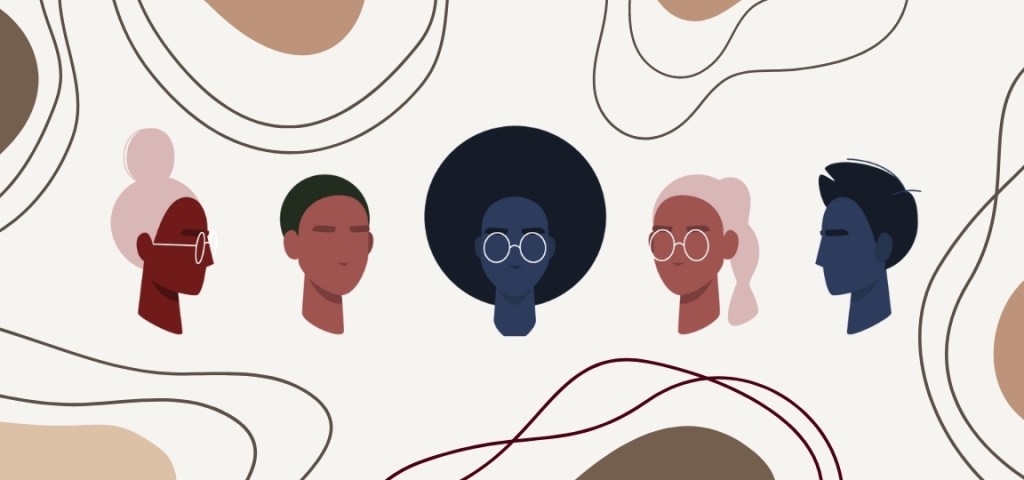How to Explain Structural, Institutional and Systemic Racism

Using terms for different types of racism interchangeably can be confusing when teaching students or professionals about racial equity and inclusion.
The key to effective education is not only being accurate, but being human, says Terence Fitzgerald, clinical associate professor at the USC Suzanne Dworak-Peck School of Social Work who specializes in policy, children and families, social inequality and institutional racism.
“We can be high-brow as much as we want, but in these times, it’s best to be simplistic and also to speak with empathy and from the heart,” Fitzgerald said.
He recommends leading with empathy, accountability and openness when educating others about structural, institutional and systemic racism
Defining Different Types of Racism
People often have difficulty identifying the effects of racism that are not explicitly clear to them or visible in surface-level interactions.
Implicit forms of racism can be difficult to identify because popular cultural narratives about racism frequently focus on individual and interpersonal forms of explicit racism.
When people see coverage of racist acts in the news, “it’s easy to point to them as individuals and say: ‘These are horrible people. I would never do such a thing,’” Fitzgerald said. But the truth is more complicated.
“To actually be a part of it on another level versus what you see on television, that’s hard to fathom for a lot of individuals,” he said, “especially [those who consider themselves] socially just.”
Taking a hard look at one’s own cultural environment — at school, at work, in social settings, at community events, in local policies — can lead to a better understanding of implicit racism and illuminate realistic and accessible ways to create change. But that change can’t begin without individual education and personal reckonings.
“When you challenge the system you support or a policy you created that actually feeds into that system of oppression, it makes people call into question who they are,” he said. “And it’s hard to face that identity.
Racism Terms and Examples
| Term | Definition | Examples |
|---|---|---|
| Individual Racism | Personal beliefs and attitudes toward other races that affect the way a person treats people of color. | A person believing in white supremacy, telling or laughing at a racist joke, sharing a racist post on social media. |
| Interpersonal Racism | Treating others with discriminatory behavior that ranges from microaggressions to physical violence. | A person using slurs or showing aggression toward people of color, mistreating others based on their skin color. |
| Institutional Racism | Policies or behaviors within an organization intended to discriminate against people of color. | A hiring manager disqualifies candidates based on their names, citing a “cultural fit” that’s actually discriminatory. |
| Systemic Racism | Perpetuated discrimination within a system that was founded on racist principles or practices. | A social work department lacks diversity among staff and students, despite training them to service communities of color. |
| Structural Racism | Cultural values in a society are so ingrained in daily life that they are seen as “the way things are.” | A judge gives a lengthier sentence to a person of color than a white person with the same charges. |
Source: Being Antiracist, National Museum of African American History and Culture
Download flashcards of the definitions and examples above.
“It’s not only the systems in existence, but the protection of all of these systems and organizations that we talk about that have a protective measure for those who speak out against them,” he said. “That’s what a lot of people don’t acknowledge.”
Before jumping to teach others about racism, Fitzgerald recommends looking inward. Take an inventory of the ways you reacted to each of these definitions, and whether you can identify examples of each in your place of work or community.
He recommends individuals conduct a self assessment with reflective questions by journaling their thoughts in response to the prompts below, or by talking through them with a counselor. Once completing them individually, educators can also use these questions in a classroom setting, or during anti-racism workshops for colleagues or employees in their professional environment.
7 Self-Reflections for Understanding Racism
1
How do these definitions compare with your understanding of racism?
2
What influenced your existing understandings of racism up until now?
3
In what ways do you see racism playing out around you daily?
4
Think of a time you were silent about a racist act. What was the cost of your silence?
5
How does your privilege affect your obligation to help others?
6
How do you need to change from this moment forward?
7
How can you make a continued effort to assess my participation in structural racism?
“Before you can lead, you have to be educated, and it’s going to be a long everlasting road of discovery and knowledge. It is a marathon, not a 40-yard dash,” Fitzgerald said. “You’re always on this journey, you’re always learning, and you’re [going to have to be] OK with that. You don’t know it all, and you’re going to need others to guide you.”
Approaching with humility is key for people seeking help with understanding racism and its effects on their community. While it’s crucial to center the voices and experiences of people of color, white people should think carefully about the ways their requests for explanations from people of color can be burdensome, tiring or even inappropriate.
Fitzgerald offered examples of appropriate and humble ways to ask for help:
- I want to be an ally, but I’m lacking in knowledge, and it’s not your job to train me.
- If you’re open to sharing, I am interested in your story, and how you feel about this.
- I acknowledge that you’ve been put in a position where you’re expected to save me.
I’m not expecting you to do that, but I am interested in how you feel.
Before asking someone to educate you, Fitzgerald recommends taking the first step to look for information that is readily available.
“There’s so much material, so many documents, so many stories and books. Their voices are already out there,” he said. “You can put yourself on a road of self-discovery.”

Strategies for Educating Others About Racism
When educating young people, Fitzgerald recommended using examples that relate to their lives. They’re just beginning to formulate their own worldviews based on their life experiences, peers’ experiences and school curricula, so it’s crucial to include examples of historical and current events that illustrate different types of racism.
Get comfortable. Before discussing racism, make sure you and all other participants are willing to be open to others’ experiences of how systems, institutions and organizations treat them.
Use relevant examples. Cater the education to an age-appropriate level, specific industry of work, or subject matter expertise for the learners.
Show the impact. Have learners take the examples one step further by identifying their own examples from local news or current global events.
Ask follow-up questions. Encourage ongoing reflection by engaging with learners about the real-time development of the examples they chose.
“Approach from a cultural humility standpoint,” Fitzgerald said. “It’s about being able to say: ‘I’m not an expert, and I have to put aside my initial opinion. I have to be able to hear your story.’”
Talking about racism can be uncomfortable, but Fitzgerald stressed the importance of working through that discomfort instead of letting it fester in the conversations themselves. He offered strategies for how to practice openness:
How to Approach Conversation About Racism:
- Be open to hearing about others’ experiences and value systems.
- Practice cultural humility when engaging with others by listening presently.
- Accept that you are not an expert about others’ lived experiences, and never can be.
- Understand that allyship is a long road of learning, not a competency to achieve.
- Look for existing resources for education before asking people of color to explain.
- Acknowledge the mental and emotional labor that people of color do to educate you.
“There are times to speak, and times to listen, and you have to be OK with that,” Fitzgerald said. “Other’s experiences — their pains, their joy, all of those things — deserve our openness and understanding.”
With humility must also come accountability; once individuals have learned and understood the definitions and impact of institutional and structural racism, it’s up to them to identify opportunities to speak out against these injustices — especially for people who have privilege and power.
On a micro, mezzo and macro level, people in positions of power have opportunities and duties to educate themselves and those around them.
Fitzgerald emphasized the importance of white people taking ownership of speaking out against racism in their school and work environments. “Everything is intensified for people of color speaking out, and that’s why we have a lot of people who are afraid to challenge the system,” he explained.
He referred to a quote from author and activist Toni Morrison, who said in a 1993 television interview on PBS: “If you can only be tall because somebody is on their knees, then you have a serious problem. And my feeling is: White people have a very, very serious problem, and they should start thinking about what they can do about it. Take me out of it.”
While it’s paramount for marginalized groups to call attention to injustice, effective change will always require people with power to act.
“They have to lead change,” Fitzgerald said. “Not just demonstrate; they have to lead. It has to be that population who is guilty of facilitating this assault, this targeting. It has to be them talking to them.”
On a micro, mezzo and macro level, people in positions of power have opportunities and duties to educate themselves and those around them.
“Everyone has a stake in this game, and it is our responsibility to help dismantle it,” he added. “But we can’t do it when we’re silent, or when we are thinking about the next promotion, or when we’re thinking about our pocketbooks.
Additional Resources About Institutional, Systemic and Structural Racism
- Research Guides: Diversity, Equity & Inclusion: Background / Best Practices, USC: internal library of resources for understanding racism and opportunities for justice.
- What to Read, Listen to and Watch to Learn About Institutional Racism, PBS: list of books, podcasts and films created by people of color that explain the lived experiences and injustices of marginalized communities.
- Core Concepts, Racial Equity Tools: library of online tools for understanding terms and frameworks about racism.
- Let’s Talk! Discussing Race, Racism and Other Difficult Topics with Students (PDF, 1.4 MB), Learning for Justice: guide for educators and other adults in helping professions to assess their own comfort and build capacity for discussing race with young students.
- Centering BIPOC Student Voices in Your School District’s Equity Work, EdWeek: on-demand webinar featuring student voices and ideas from school districts about affirming and elevating the voices of students of color.
- What Is Racial Equity, Race Forward: toolkit for understanding and assessing structural and institutional racism in a professional work environment.
Citation for this content: The MSW@USC, the online Master of Social Work program at the University of Southern California.


